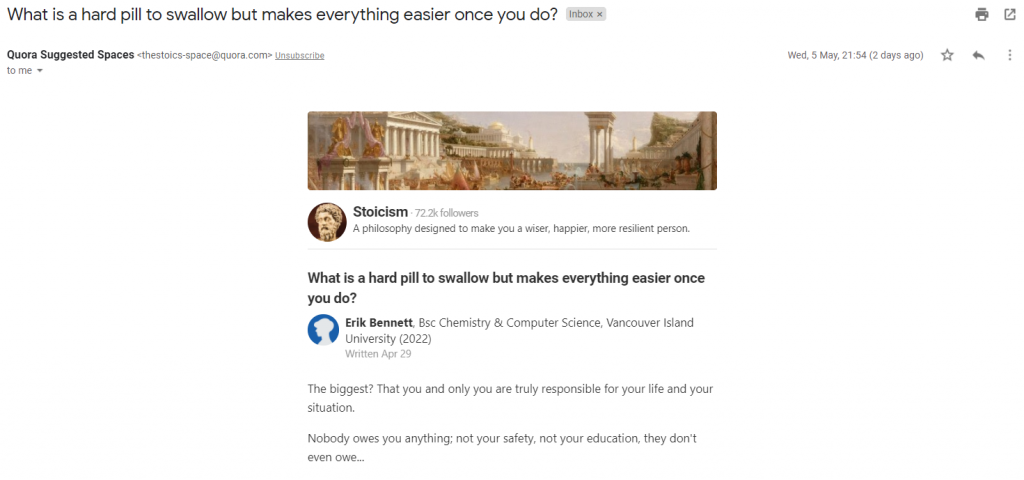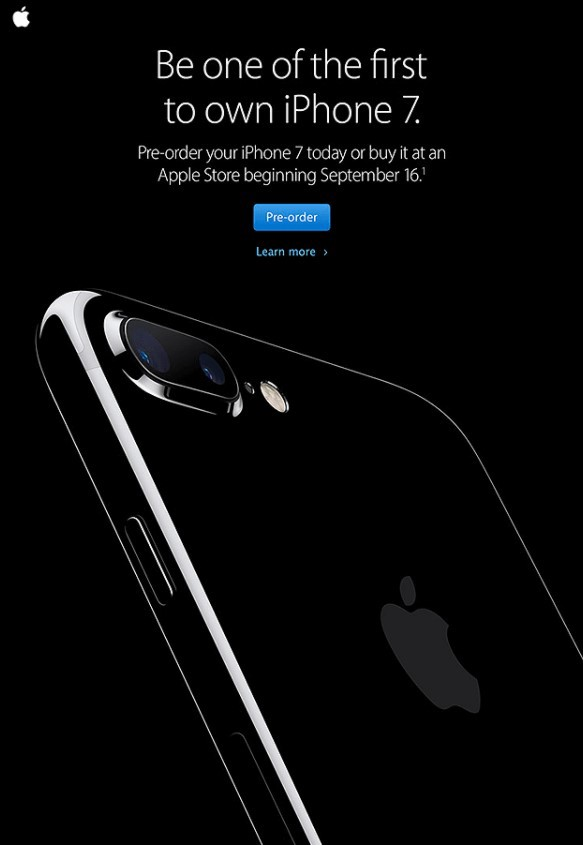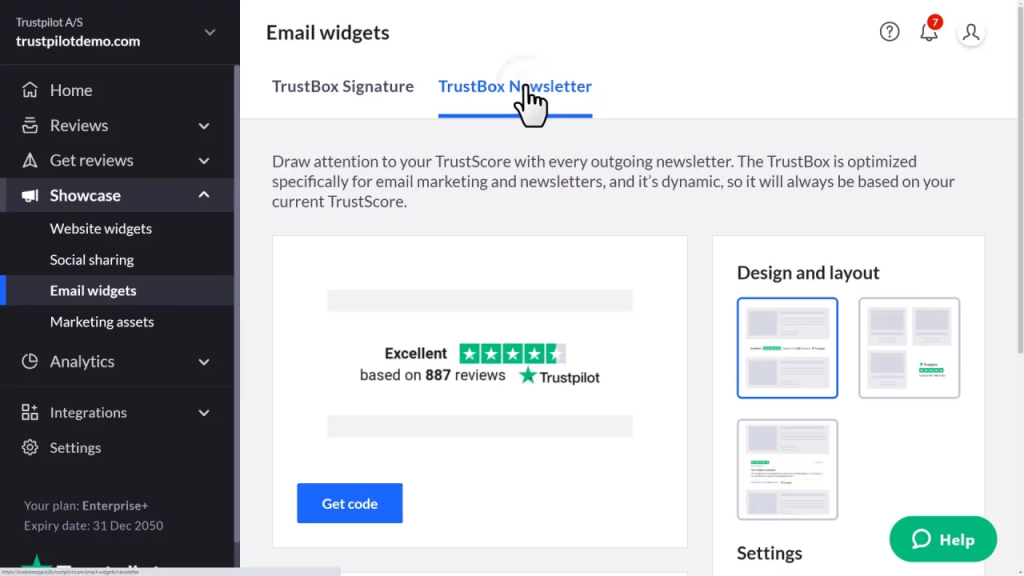Easy Steps To Write An Effective Sales Email
So you did the home work — lead generation campaigns are completed, extended email search and verification is done, an automated mailing software license is purchased, and a team of designers and authors is hired. Now, it’s time to make a final step and create an engaging email that will rocket your company’s revenue.
Quick Links
But, as you’d probably already guessed — it’s not that simple.
Email marketing is a top-of-the-mind communication channel for both B2B and B2C companies. Just look at these numbers: in 2020, there were 306 billion emails sent and received daily, while by 2025, this figure is expected to increase by 23% — to 376 billion.
However, some marketers believe that mailing was discredited and appeal to low open rates and CTR percentages. Indeed, the average email open and click-through rates in 2020 were 18% and 2.6%, respectively. Seems not quite impressive, doesn’t it? This is the reason many shift their energy onto other marketing channels, primarily social media.
But let’s hollow the math for a little. Weight tiny metrics on billionth daily turnover, and the actual number of opened and clicked emails won’t look that miserable. Not to mention that campaigns’ launching costs are comparatively lower than using social media ads.
So, do you agree that email marketing shouldn’t be written off? If yes, we’ll guide you through the important components of a powerful selling e-letter.
How to write an effective sales email?
Before we move forward to exact tips, let’s stay back and say a few words about safety. When you launch an email campaign, you shall follow a “Not to harm” credo. Reckless mailing may turn in multiple risks — from the brand’s misconception to the ban for spamming.
To avoid threats, follow simple yet essential rules:
- Regardless of whether you performed email address search independently or bought a ready-to-send database (which we strongly do not recommend, but still), spend some time on email validation. Use email verifiers to get rid of non-existing, disposable, or misspelled e-addresses.
- Study GDPR and make sure you act according to data-protection requirements.
- Always add an unsubscribe option in your emails.
- Avoid spam trigger words and being too pushy on mailing frequency.
After precautions were met, apply these seven fundamental points for effective sales emails.
Identify target audience
Clarify what audience you’re going to reach out to. It’s important to choose proper wording and create an apt message. Segmentation parameters alone may not be enough to understand characters’ traits. Thus, you can fail to capture the attention and not even hope to get an answer or a click.
If your marketers have already designed Buyer Personas profiles, use these to plan storytelling and site emphases. If not, perform pre-screening autonomously: find recipients’ social media profiles by email and study these. Use one of the techniques:
- Install email qualifying extensions.
- Create corporate social accounts, like Facebook Business, to upload leads’ emails and find their profiles.
- Analyze information from look-alike audiences.
- Scan random client’s statistical samples.
Become a detective. Research public posts and make assumptions about your clients’ interests, style, problems, and concerns. Assemble scattered data pieces into more-or-less general personality portraits and write emails as if you had to communicate in person.
Address customers by name
The times of the “Dear Sir or Madam…” introduction have passed. Today, the etiquette presumes using as much personalization as you can provide. Each of us receives, on average, 30 emails daily. If a sender didn’t spend time to find at least your gender and name, why would you read the message?
Be precise and engaging from the very beginning, do not devote too much space to introducing yourself or listing your company’s regalia. Compare two addressing approaches:
- “To whom it may concern,
My name is Jack, I represent ABC company. We are an honorary member of the XYZ Association. This year we were proud to win the 10th consecutive award in the nomination of the Best Manufacturer. We’ve recently launched a new product line, and I’m writing to acquaint you with its main characteristics….”
- “Hi, John,
I’m Jack from ABC company. I’ve recently seen on LinkedIn that you’re launching a brand new offshoot of the main business. I’d like to congratulate you — it’s cool when companies do invest in their region’s economic development. We at ABC try to support local businesses as well, our new product line….”
Agree that the first writing style is tedious — it’s too impersonal and far from the messaging purpose. Business runs fast nowadays, so unless you please a reader right away, they won’t wade through the jungle to the point, for sure. Greet by name, and your chances to get a certain outcome will rise significantly.
Write a powerful, engaging subject line
Subject lines are notably relevant for B2C emails. If you strive to be too engaging in B2B email sequences, you risk appearing weird or even roguish. Nevertheless, both cases require subject lines to be concise, encouraging, and spammy-words-free.
Mailing providers, like Gmail, have advanced anti-spam firewalls. Just in case, do not overuse spam-trigger words in both subject lines and body text. Being over timid is not a good decision either because, in this case, your email won’t be noticed at all.
The best way out is to find a balance between neatness and creativity. Here are a few catchy, yet gentle subject lines you can try:
- 5 tips for better [Lead’s pain point]
- Study [Trending discipline] this summer
- Know how to [Lead’s pain point]
- [Referrer’s name] recommended to contact you
- I have a question about [Lead’s pain point].
The two last are a bit on the verge, to be honest. But without trying, you never know what works, so for any subject line, schedule several A\B tests before scaling them onto massive outreach.
Craft an intriguing introduction
Try to make the reader interested right away, but don’t go overboard. Think about writing 1-2 genuine sentences. Use two tricks — the praise and a free bun. Do not forget about the style — it is crucial here. Compare:
- “Many companies struggle to create effective emails. Writing a good piece of text is a true talent, and not every specialist succeeds in this craft. Below we’ve compiled recommendations you can utilize to write business emails professionally…”
- “We’ve guessed you might have to write business emails a lot. To assist you, our content team has created a well-structured template — download the attached copy and enjoy.”
You can also start with some facts or refer to the example of someone else’s success. Or go even further — use proverbs or riddles. For example, Quora’s newsletters stand out from the crowd by far, due to the creative heading and body of the letter.

“Creative newsletter from Quora”
Instead of tired old mantras like “It’s been a while when you visited our website,” Quora attaches pieces of catchy questions and users’ discussions with a laconic button “Read more.”
The only issue with intriguing content is not to happen offensive, incompetent, or outdated.
Be connected with the customer
Do not oppose your interests to the recipient’s — demonstrate concern over their thoughts. Maintain dialogue series: refer to previous conversations, agreements, and even occasional phrases. This way, communication will be fruitful and consistent.
Appeal not only to “short and sweet” business phrases but also to personal interests. Your client mentioned they were going on vacation? Next time you message them, start with a small talk — ask about how the rest was.
Whichever personal touch you add, do this with ethics in mind. And don’t be too chatty — commercial mailings have particular goals. If you want to keep connection, add questions and polite follow-ups:
- Do you have unanswered questions?
- Have you already received feedback regarding [the matter] from our support team?
- How was your trip with us?
- How would you like to proceed?
- Are these terms acceptable for you?

“Ask for additional questions”, source
Another tip hereabouts — ask for opinion when you need to deny something or challenge recipients’ arguments politely. For example, “What would you do if you were in my [place, situation, circumstances]”.
State the features and benefits… Again and again
Praising the product doesn’t have to be annoying. Disclose benefits from the perspective of a client’s needs — show how effectively your offer can meet these.
A benefit is not something solely tangible or physical. You may gently exploit buyers’ psychology by adding perks like exclusiveness and limited time frames.

“Product launch supporting email campaign by Apple Inc with the particular accent on privileged orders,” source
A good idea to show benefits is to compare some current states with the past or average. And use numbers! For example, if you invested in a more agile delivery system, it would be reasonable to make clients informed. Instead of claiming “We deliver pizza faster now,” tell facts — “Now, your pizza will be delivered in 30 minutes instead of 45.”
Do not neglect testimonials
Customer testimonials are very persuasive. The film industry is a good germane example. Opinion makers, critics, journalists, bloggers, not to mention the Academy Awards jury, influence the decision to watch a particular movie or cartoon, indeed.
Roughly ⅔ of people say that positive reviews make them trust a business far more. If you target new clients via email, include some pieces of evidence, like reputation scores or reviews, to show you deserve trust. There are two methods to include testimonials in the newsletter:
- Add snapshots from your website
A “Reviews” section is a good idea for either services or production companies. After you’ve gathered substantial positive feedback, use it as an asset – to form an attitude among new clients.

“Allow satisfied clients be your strongest argument”, source
- Add email widgets from reviews’ aggregators
Share reviews you’ve collected on external websites with recipients. For example, if you have a Trustpilot profile, you can add a TrustBox to newsletters.

“TrustBox widget from Trustpilot”, source
Consequently, recipients will see your good reputation marks and the overall newsletter layout will appeal more assuredly.
Wrapping up
An effective sales email is not something you know exactly how to write after just a few trials. It’s a combination of reasonable techniques, accumulated experience and, in some cases, a piece of luck.
Why WooCommerce is the Best Choice for Your Online Store?
WooCommerce stands out as a top option for anyone looking to build an online store. This platform…
0 Comments8 Minutes
How to Use AI-Powered SEO Tools for WordPress eCommerce
SEO is a critical factor in the success of any e-commerce WordPress store. As competition…
0 Comments11 Minutes
Why Short-Form Videos Are the Future of Content Marketing
Your Instagram customers spend over 50% of their time watching short-form videos and reels. Rather…
0 Comments12 Minutes
The Role of Digital Marketing in Business Growth
Online marketing touches every aspect of a business, whether it is initiating the idea or for an…
0 Comments3 Minutes
AI Meets Authenticity: Balancing Automation and Human Touch in Content Marketing
Is your brand starting to sound like a robot? In a world where algorithms write faster than any…
0 Comments8 Minutes
Essential Tools for Enhancing Web Design and UX Hosting
Have you ever visited a website that felt slow, clunky, or confusing? A website that is poorly…
0 Comments11 Minutes
How a Mini Cart Transformed My Store’s Shopping Experience
Okay, real talk—running an online store is hard. You think you’ve got everything figured out, you…
0 Comments9 Minutes
Balancing Your Security Initiatives With Industry Compliance Requirements
Managing a business today comes with a number of daily battles that need to be fought. Resources…
0 Comments11 Minutes
1 Comment
Comments are closed.









Thank you for sharing the easy steps for writing an effective sales email. It helps to identify the target audiences and engage the customers with good subject lines. You can use EasySendy Pro for crafting an intriguing introduction and getting connected with potential customers.